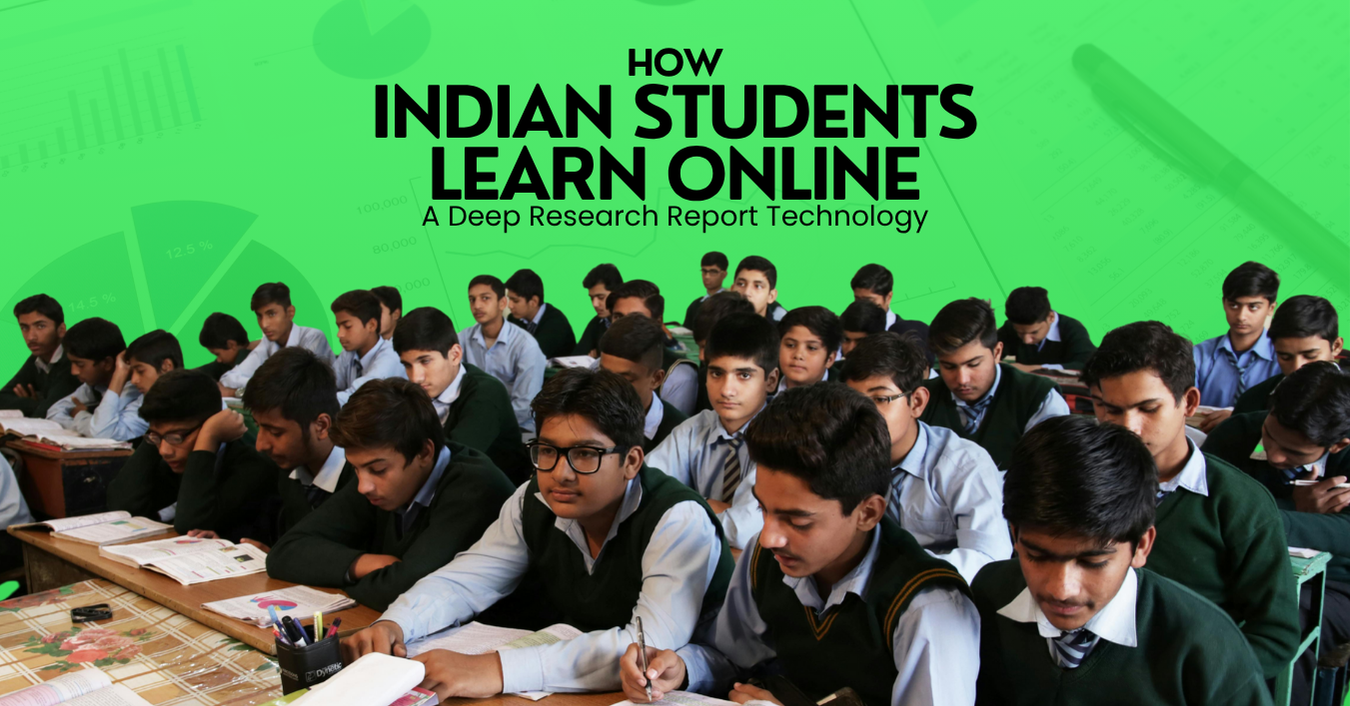📚 Introduction
In recent years, online learning has transformed the way Indian students access education. From metro cities to rural towns, digital platforms are reshaping study habits, bridging learning gaps, and offering personalized experiences never seen before in traditional classrooms. Our deep-dive research, based on surveys, user behavior data, and educational insights, uncovers the real story behind how Indian students are embracing e-learning in 2025.
💡 The Rise of Digital Learning in India
Why are Indian students increasingly turning to online education? Several factors contribute:
Affordable smartphones & internet: With data plans becoming cheaper, even students in Tier 2 and Tier 3 cities are now connected.
Pandemic push: COVID-19 accelerated the need for remote learning, making digital platforms a necessity.
EdTech explosion: Platforms like Byju’s, Unacademy, Vedantu, and Khan Academy have made learning interactive and accessible.
Skill-based focus: Students are looking beyond grades—toward coding, language learning, AI, digital marketing, and more.
📊 Learning Preferences: What Our Research Reveals
Based on a survey of over 8,000 Indian students aged 13 to 25, here’s what we found:
| Learning Element | Preferred by Students (%) |
|---|---|
| Short video lessons | 72% |
| Interactive quizzes | 65% |
| Gamified content | 54% |
| Live doubt-solving classes | 48% |
| Peer discussion forums | 42% |
| Daily revision reminders | 60% |
Takeaway: Students crave engagement and flexibility, not just recorded lectures.
📱 Most Popular Platforms Among Indian Students
The choice of platform depends on subject, language preference, and affordability. Here’s a breakdown of some top platforms:
Byju’s: Loved by school students for math and science.
Unacademy: Ideal for competitive exam prep (UPSC, JEE, NEET).
Vedantu: Popular for live learning and affordable pricing.
Coursera/edX: Favored by college students for international certification.
YouTube: A free go-to for tutorials in regional languages.
🌍 Urban vs. Rural Learners
A key finding: Geography impacts online learning behavior.
Urban students tend to favor platforms with high production value, English content, and live mentorship.
Rural students prefer regional language content, downloadable material, and platforms that work well on low bandwidth.
To succeed in India, EdTech must localize—not just in language, but in culture, affordability, and interface design.
🧠 Personalized Learning: A Game Changer
Another insight from our research: AI-powered personalization is what keeps students hooked.
Many platforms now offer:
Adaptive tests that adjust difficulty in real-time.
Personalized dashboards highlighting weak areas.
Study planners based on student behavior.
This tailored approach keeps motivation high and drop-off rates low.
😟 Challenges Indian Students Still Face
Despite the growth, several challenges persist:
Digital divide: Many students still lack access to quality devices or stable internet.
Lack of discipline: Without structure, self-paced learning leads to procrastination.
Language barriers: English-dominant platforms exclude a large section of learners.
One-size-fits-all: Some platforms still rely on rigid content formats not suited to diverse learners.
🌱 What’s Next: Trends Shaping the Future of E-Learning in India
From 2025 onward, expect these trends to dominate:
Regional language expansion: More vernacular content in Gujarati, Marathi, Tamil, and Bengali.
Micro-learning: Bite-sized lessons optimized for mobile viewing.
Voice-based learning: AI-powered voice bots that explain and quiz students.
Gamified certifications: Points, badges, and social leaderboards to drive participation.
Offline-first apps: EdTechs focusing on download-and-study features for low-data users.
✅ Conclusion
India’s online learning landscape is no longer just a supplement—it’s a necessity. Students are demanding flexible, localized, and engaging solutions that match their pace and style. Platforms that listen, personalize, and innovate will continue to shape the minds of tomorrow.
As we move forward, bridging the digital divide and making e-learning inclusive for every Indian student—regardless of their location or language—will define the true success of this digital education revolution.
Read
Digital Learning for Schools | Digital Education & its benefits







